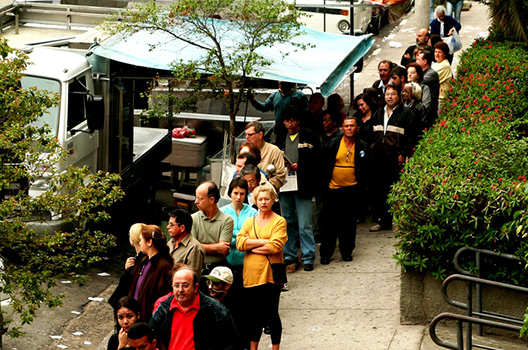
Election 2014: The Road to the Runoff
The first round of the Brazil’s presidential election turned into a rollercoaster of an election: its ups and downs yielded an unexpected second round scenario. The consolidation of a third player the Brazilian Socialist Party (PSB), following the death of Eduardo Campos, threatened to break the regular bipartisan political dispute between the Workers’ Party (PT) and the Brazilian Social Democracy Party (PSDB). For the first round Marina Silva, PSB presidential candidate, was considered a clear contender, but her third place finish makes her voters decisive for the second round on October 26th.
To analyze the first round and look ahead to the runoff, the Adrienne Arsht Latin America Center held a conference call on October 6 with three of the most prominent experts on Brazil. Those experts included Ricardo Sennes, the Latin America Center’s nonresident senior Brazil fellow; Mauricio Moura Visiting Scholar George Washington University; and Raul Juste Lores, Washington correspondent for Brazil’s largest newspaper, Folha de São Paulo.
The conference call focused on three main questions. What happened to Marina? What has been the message the voters are sending during the presidential race? How will her endorsement play in the second round?
The call’s experts noted that Marina stumbled several times since her September surge in the polls: some of her voters migrated after thinking she would not win the election if she made it to the second round. Marina lost support among the low income people who have been some of the strongest voting segment of PSB. She also faced an onslaught of negative campaign ads and high media scrutiny which gave room for Aécio Nieves, PSDB candidate, to become a more viable competitor.
Experts observed that this election demonstrated the country’s division into two groups, the one that still supports Dilma Rousseff’s policies, and the other which are constituted of people who have been affected with the current situation. This includes a political discontent about how the country is organized politically, affecting Dilma’s support and giving other candidates a chance to gain more relevance in the political spectrum.
For the upcoming runoff, the states of Sao Paulo and Minas Gerais represent the two main demographic centers that will decide the ultimate winner and are also where most of Marina’s voters are concentrated. Aécio Nieves will need at least 70 percent of Marina’s votes to win the presidential election, and he will have to convince northeastern voters that he is not the typical elite candidate from the South. Furthermore, PSD National directory is closest to Dilma than to Neves, making it harder for him to attain the roughly 10 million votes necessary for winning. Therefore, the transferability of Marina’s vote will depend not only on her endorsement, but in her party’s assessment and the personal choice of the population.
Listen now
A discussion with
Ricardo Sennes, Nonresident Senior Brazil Fellow, Adrienne Arsht Latin America Center, Atlantic Council; Managing Partner, Prospectiva
Mauricio Moura, Brazilian pollster and Visiting Scholar, George Washington University
Raul Juste Lores, Washington Correspondent, Folha de São Paulo
Comment and moderation by
Peter Schechter, Director, Adrienne Arsht Latin America Center, Atlantic Council
Jason Marczak, Deputy Director, Adrienne Arsht Latin America Center, Atlantic Council

